Lately, you can’t seem to escape the influence of the Netflix show “Tidying Up with Marie Kondo.” But what can you do to organize your commercial kitchen? While you may not be able to use the same “does it spark joy?” guideline that Kondo advocates, there are a ton of things you can do to make your workspace better. And that will most certainly spark joy!
Let’s get started organizing your commercial kitchen.
1. Can Racks
Let’s face it. A lot of restaurants use food and ingredients that come in large cans. It’s a convenient container. But while its shelf life can’t be beat, it actually doesn’t work very well on standard shelves.
“You would think that the big cans would stack well, but they just don’t,” says Mike, the manager of a regional pizza chain. “We use a lot of canned ingredients, especially for our sauce and a can rack was the best thing that ever happened to us.”
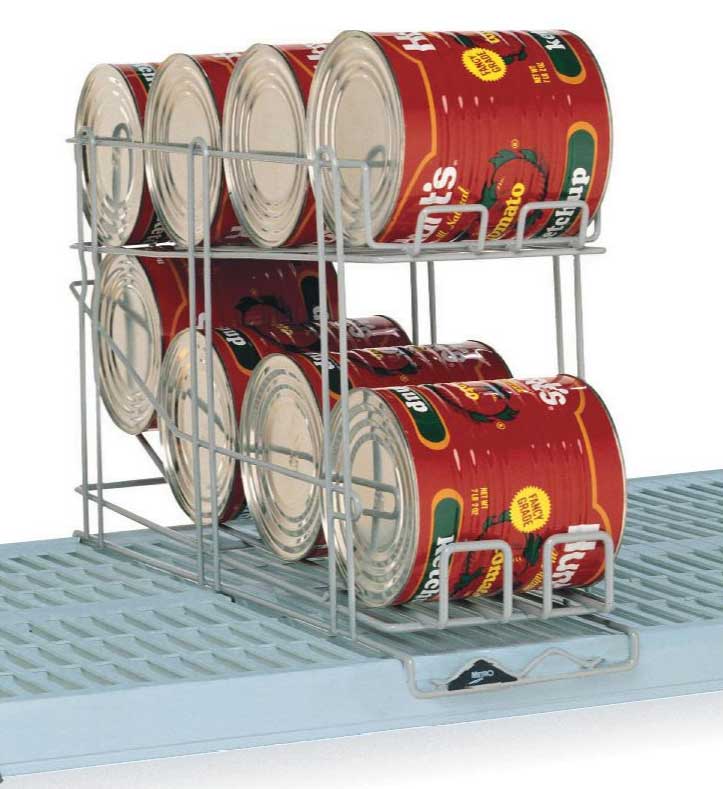
You have probably seen the big cans that are known as #10 cans. These beasts have a lip that is useful for the can opener, but becomes a severe and potentially dangerous obstacle to stacking the cans. Stacked cans can be tipped over pretty easily. And with cans that can weigh as much as a small dumbbell, a dropped can could cause some serious injuries.
“It also helped with our stock rotation. We used to keep the cans on a shelf, but most employees would simply shove the old cans to the back and stack the new cans in front,” says Mike. “That meant we had some pretty old product sitting around. But with the can rack, you just load up the new product and it just rolls forward as it is being used. It’s like magic!”
2. Ingredient Bins
Handling dry ingredients can be a messy hassle even under the best of circumstances. But you can make it a little easier with one simple piece: an ingredient bin.
Ingredient bins come in a variety of shapes and sizes. For businesses like bakeries that use a lot of dry ingredients like flour, an ingredient bin is indispensable.

“We use an ingredient bin for the flour we use in our crust,” says Mike in relation to his pizza business. “A couple of essential features to us are the [casters] so we can easily move it around, the sliding lid and a hook for the scoop or measuring cup. It makes this so much nicer to use.”
Many dry ingredients come in bags. This can make for a messy situation if you try to use the product directly from the original bag. Plus, heavy bags are a nightmare to move around and make actually be impossible for some employees.
Ingredient bins reduce the need to handle the product so using them has a food safety benefit as well.
So if you work with these types of ingredients, do yourself a favor and invest in a quality ingredient bin.
Shop All Ingredient Bins
3. Organize Your Refrigerator
This tip has multiple benefits. First, an organized refrigerator will save time and make your workflow more efficient. But it can also save money because a messy refrigerator may be wasting electricity for several reasons. First, the door may be left open longer as employees search for what they need. But a cluttered or overstuffed refrigerator restricts airflow and that causes your unit to work harder. Thus using more electricity.

So how do you go about organizing your refrigerator space? There is no one right answer so you will have to find what works for you. But you should consider how frequently each item is used. Put more frequently used items in an easily accessible place, typically a middle shelf, toward the front of the unit.
You can use refrigerator-safe baskets or other containers to organize similar or related items. Standard hotel pans that come in many sizes can be used to help keep things under control.
You can use shelf tags to help employees manage the different spaces. This can also help with your food safety practices as some shelf tags allow you to record extra information about the products being stored. That’s a bonus to getting organized!
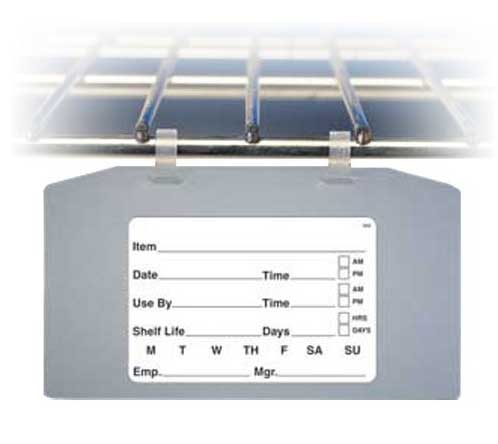
4. Knife Storage
Knife safety in a commercial kitchen is a difficult task. You have a lot of different people running around, usually in a rush and not necessarily paying full attention. Add in sharp, pointy objects and you have a recipe for disaster.
Knives are an essential tool in most kitchens. So you can’t just do without them. But there are some things you can do to make them easier and safer to deal with.
One suggestion is to use a magnetic knife strip. This gives a way to store knives in an easily accessible, but safe and out-of-the-way manner even for the busiest kitchens. Plus it saves drawer space and can be safer since it’s easy to get cut reaching into a messy knife drawer.
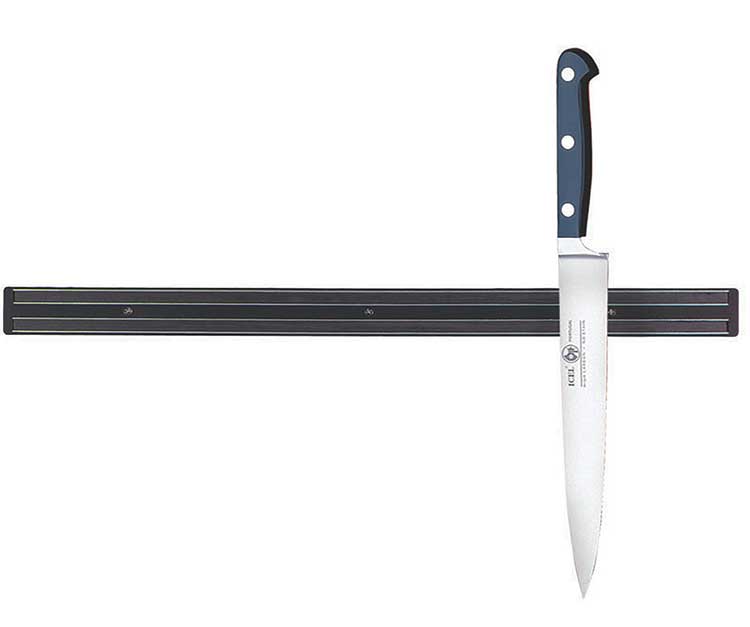
If you don’t have a space to mount a magnetic knife bar, there are alternatives. There are standalone magnetic bases to hold knives off the counter and out of the way. This can be a good solution for some settings. And there is the tried and true butcher block method for storing knives.
The bottom line is that you need to have a plan for handling and storage of knives to help maximize efficiency and reduce accidents.

Shop All Knives & Accessories
5. Shelving
This is probably a no-brainer and you are probably already using shelves in some ways in your business. But you can supercharge your shelving uses to make for a more efficient and organized commercial kitchen.
When people talk about shelving, they typically think of floor model, wire shelves. These are the bread-and-butter of the shelving world. They are used for storage in your kitchen, in your walk-ins, and even in the front-of-house. They are just about everywhere.
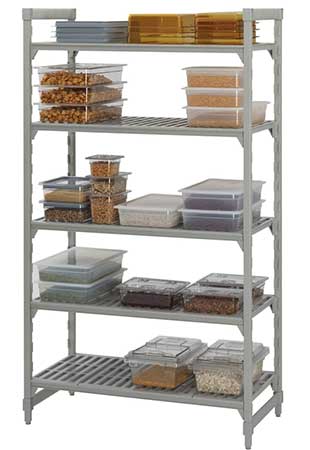
But there are other types of shelves to consider. For example, wall-mounted shelves can help free up counter space by utilizing the area above the counter that would otherwise go unused. You can also get shelving installed over things like refrigerated prep tables. Again, easy access for your kitchen utilizing space that would normally be empty.
Mobile shelves are also key for some businesses. The ability to move your shelving around on casters can help you be more efficient for reoccurring tasks that are done on a sporadic basis. You roll the shelf to where you need it and then store it when you are done. No fuss, no muss.
Organize Your Organization
But regardless of what kind of shelving you use, there are a few simple things that you can do to make that shelving work better for you and your employees.
Creating uniform spaces for similar items helps everyone because it is easier to find what you are looking for quickly. But even with the best of intentions, this type of organization can drift over time. Consider using shelf tags to label the different areas. This can help as new workers come into the business. Not only will they know what they should expect to find there, but they will know what NOT to put in that area as well.
Consider using storage bins that sit on your shelves. This is especially good for items that are used less frequently. We spoke with one restaurateur that creates different desserts for their menu frequently. They have a ton of cake decorating materials. But they only make cakes for the dessert menu every couple of weeks. So the cake decorating materials are in a sealed container. Easy to retrieve when it’s time to decorate a cake. Easy to store the rest of the time.

Shop All Shelving & Accessories
6. Thin the Herd
My mom always said “You get what you pay for.” And this holds especially true for your kitchen gear. It’s very easy to accumulate “stuff” in the kitchen. But it’s often better to go for quality over quantity. And it’s easier to store as well.
Let’s face it, many of the tools you use in the kitchen are just variations of things to move food around. Spoons, tongs, ladles, spatulas, etc. It’s probably time to do an audit.
One chef we spoke with provided this tip: About once a year, he rounds up all his cooking utensils from their regular storage location. He then places them in a couple of large containers on a shelf. If a utensil is retrieved and used, it is then put back in its normal storage location. But after a specified period of time, those utensils that are still in the container are disposed of or relegated to other storage.
It’s sort of like Survivor for your kitchen utensils.
Replace & Upgrade
And let’s be honest, you have favorites when it comes to utensils. There may be 20 spatulas in your kitchen, but you always look for that special one. So why do you have the rest? It’s much better to upgrade your tools so that you have utensils that actually do spark joy.
We also need to admit that things wear out. Why are you holding on to that ratty spatula? Is that knife still the best tool for the job?
Worn out gear makes the job more difficult. So make sure you have the right tools for the job. Replace and upgrade where needed.
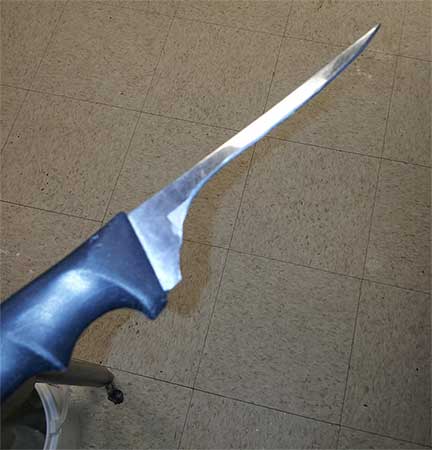
Shop All Kitchen Utensils
Wrapping it All Up
No matter what shape your commercial kitchen is in, you can always make improvements with a little organization. Organizing your commercial kitchen doesn’t have to be a huge project. As you can see, even just a few little steps can lead to great results.

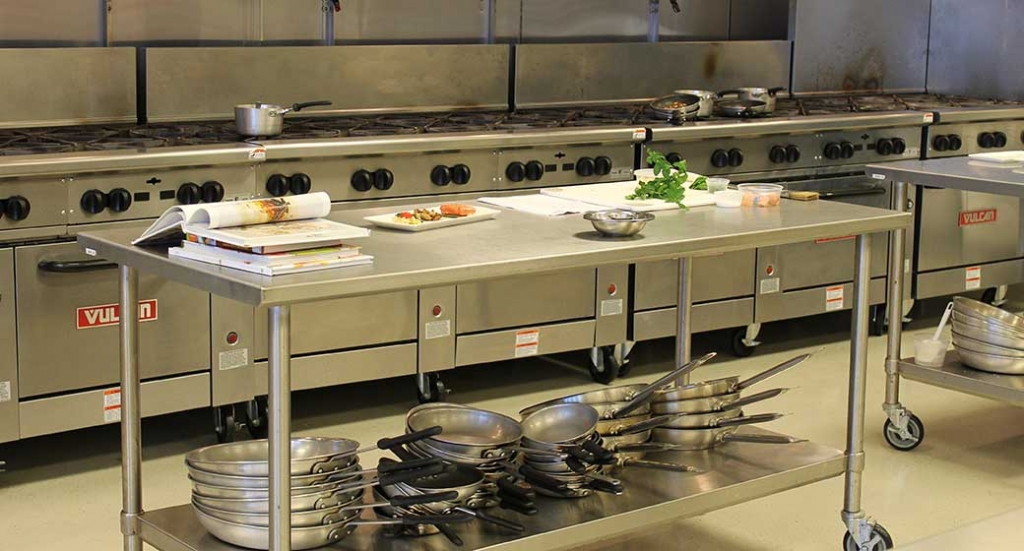


I appreciated perusing this post.
7 Hottest Germ Danger Zones in Your Kitchen – Alsco NZ Demo
Excellent advice for cleaning up a professional kitchen! When you work in the food industry, keeping your kitchen clean and organised is essential for productivity and food safety. I enjoy how the site offers straightforward yet practical suggestions on how to arrange kitchen ingredients and make using them hassle-free.A successful and effective culinary business is built on a clean, organised work environment.